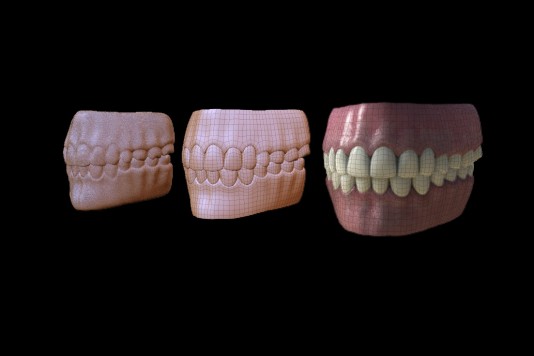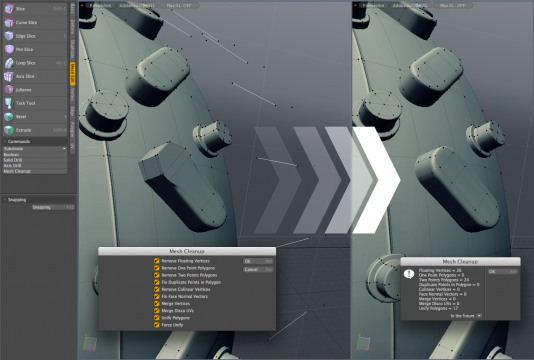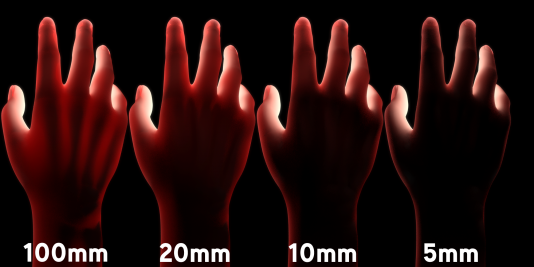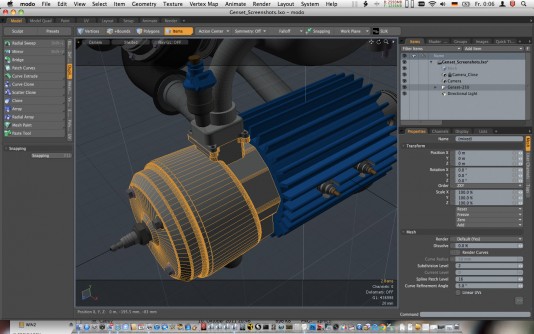New version of Modo and new CAD Loader extend Luxology’s reach in CAD-to-ad and 3D content creation.
Luxology today releases an updated version of its popular Modo 3D content creation software, and introduces a new add-on to strengthen its leadership in CAD model repurposing for advertising and marketing.

Luxology started in 2002 when Brad Peebler, Allen Hastings, and Stuart Ferguson left NewTek and rounded up a few programmers to see if they could take 3D content creation in a new direction. They wanted to make 3D easier to use, and they wanted to expand the market, not necessarily take sales from competitors. Early on they landed two accounts—Dassault Systèmes SolidWorks and Bentley MicroStation—that led to Luxology becoming the leading non-Autodesk solution vendor for repurposing CAD models for advertising and marketing. It also took them from a market (in 2002) of 300,000 (for 3D digital content creation) to 1.3 million (engineers and designers using SolidWorks and MicroStation). They refer to the market as CGAM: computer graphics for advertising and marketing.
At the same time as creating CAD-to-ad capabilities in Modo, Luxology also worked to expand Modo from being a simple, easy-to-use 3D modeler to becoming a tool for the entire 3D content creation pipeline. The latest version, Modo 601, adds a wide variety of new features to what they call an “artist-friendly … full pipeline solution for professionals working in media and entertainment, advertising, and engineering and architectural visualization.”

Working through the list of new features in Modo 601, perhaps the two most anticipated by existing users are the ability to pose and animate skinned characters, and the new retopology modeling environment. Retopology, also known as resurfacing, is the process of creating or modifying edge flow over an existing base geometry. Retopology tools automate what has previously been a tedious manual workflow to create clean models from imported geometry. Some beta testers have commented that the new retopology tools are their favorite Modo 601 feature.

Other features that will excite existing Modo users include:
- The addition of recoil dynamics (including soft body);
- Rendering now supports volumetric rendering of clouds, smoke, cotton and similar volume-filling effects, so artists can achieve dense or wispy results that feature self-shadowing;
- A new Render View that features both image processing and a “splitter” for side-by-side comparisons of two renderings;
- Improvements to the Preview renderer which allow it to be used for final image generation;
A new Pose tool that increases the speed of creating and animating characters or objects; it also is used to assess pose prototypes to be selected for more detailed modeling.

A complete list of new features, along with a slideshow guided tour, is available at the Luxology website: http://www.luxology.com/modo/601/tour/index.aspx.
Modo 601 is available immediately for both Mac OS X and Windows at $1,195 with an upgrade price of $495. Existing Modo owners can upgrade for $395 through March 14, 2012. Promotional cross-grades for users of other 3D content creation tools are also available.
New CAD Loaders for Modo
New today from Luxology are CAD Loaders for Modo, add-on modules for Modo 601 that allows CAD users working with IGES, STEP, or Parasolid CAD models to import geometry to create photorealistic images and animations.
CAD Loaders for Modo are based on Parasolid technology, the 3D geometry kernel from Siemens PLM Software that is used in an estimated 40% of all 3D model data. When models are loaded into Modo, the CAD surfaces can be dynamically tessellated for optimum use in Modo’s modeling and rendering operations. Real-time rendering previews and dynamic editing tools in Modo can then be used to turn base designs into immersive, photorealistic graphics.

Incoming surfaces are maintained as parametric surfaces in Modo, which allows for alternate tessellation parameters to be applied dynamically under user control. Resulting meshes can be saved as convex polygons or a combination of quads and n-gons (a polygon with n sides).
Many CAD files are characterized by large amounts of repeated data elements. An Instance Handling feature gives users the choice of loading instance-laden files as copies, instances, or Modo replicators. The result is greatly reduced memory use and faster response times.
Paul McCrorey makes a living repurposing CAD models for use in advertising and marketing. His clients include AT&T Wireless. “I’ve probably done more than 90 cell phones,” he says. McCrorey has been a Modo user for several years. “The CAD Loaders are an awesome addition to my workflow,” says McCrorey. “By eliminating triangles from my imported geometry, I get quad-based results and moldable assets that are easier to use and require a lot less memory. This allows me to take my work to the next level no matter what program I start in. I love that.”
CAD Loaders for Modo are now available. The Advanced CAD Loader includes Parasolid XT, IGES, and STEP file loaders for $695.00; the Basic CAD Loader is a Parasolid XT standalone file loader priced at $495.00. CAD Loaders for Modo are compatible with Microsoft Windows and Mac OS X.






